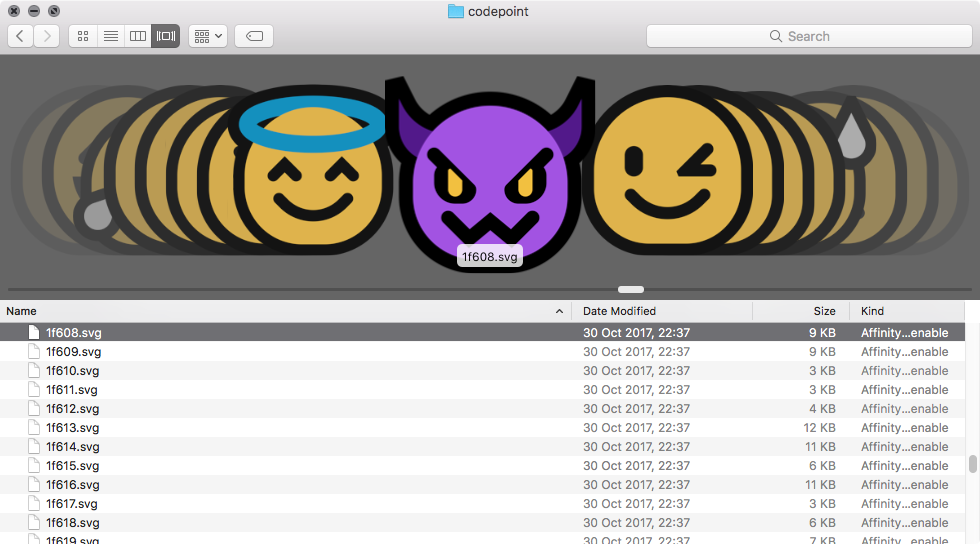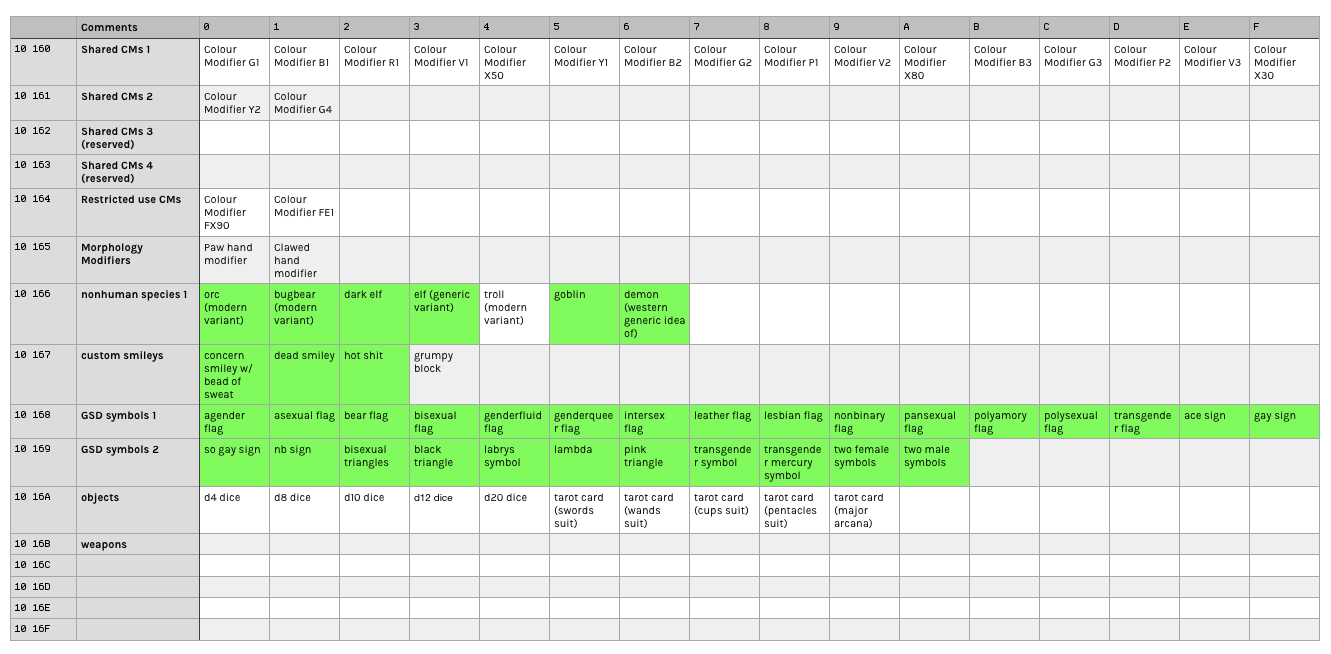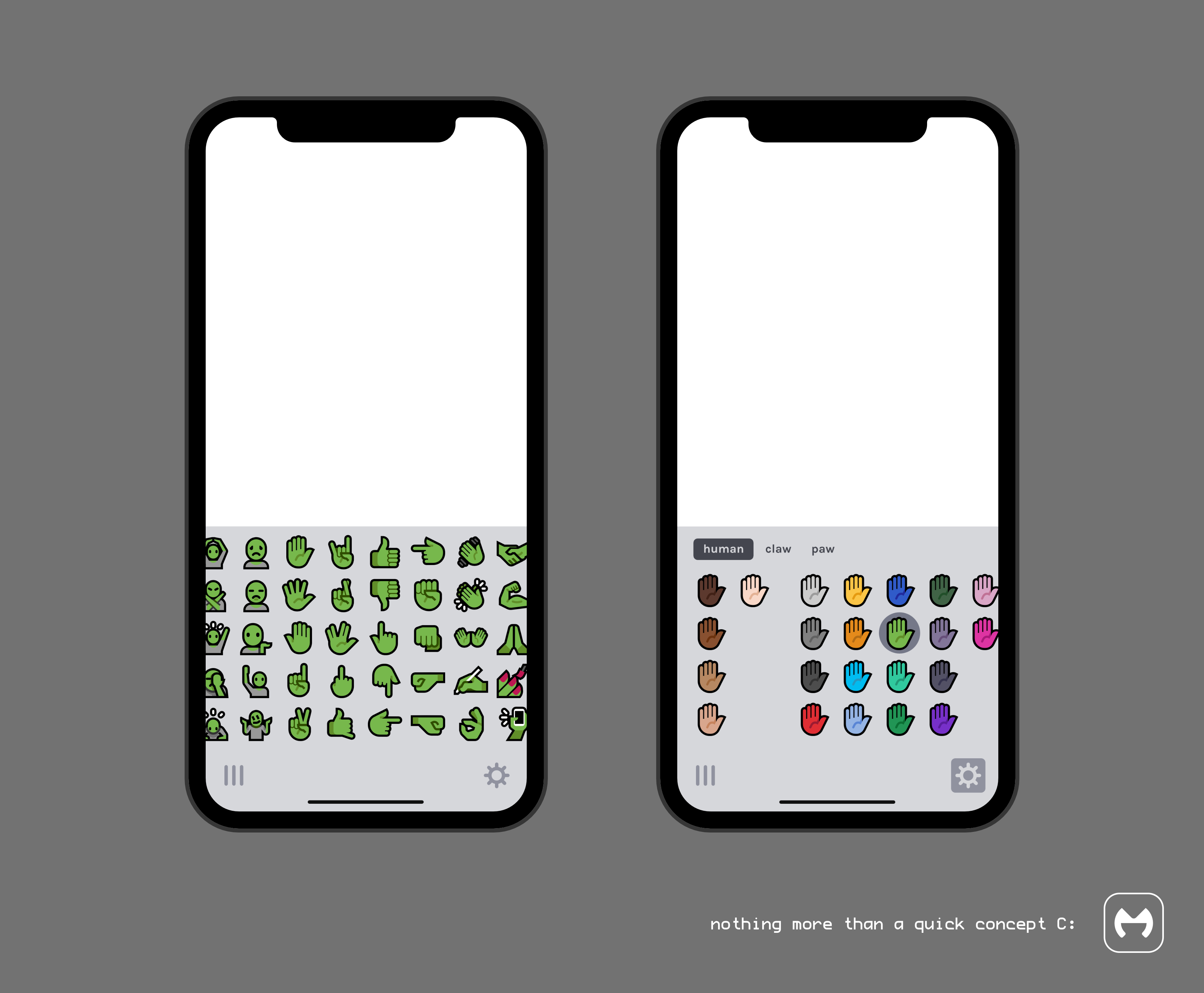Happy holidays, everyone! I hope you’re doing okay, wherever you are.
As 2018 is coming along and because I’ve never *really* done this before, it would be a good idea to roundup long-term goals for Mutant Standard other than just making more emoji, both custom and Unicode Standard.
TL;DR: I want to try to put Mutant Standard in as many places as possible.
Things that are definitely going to happen
Codepoints

As I’ve explained before to $3+ patrons, codepoints are the little numbers that represent your average unicode emoji. At the moment, the packages you download from the Mutant Standard site are named by shortcodes simply because those are the names I go by when I edit. Shortcodes are great if you’re a person looking for a few emojos to throw onto the Discord server, but computers aren’t keen on those.
As I said a while ago, my enbyfriend, who made the original exporter script (meaning that I don’t have to recolour emoji by hand) has been working on a new script (called Orxporter) which will enable me to export both packages that have shortcode emoji names and packages that have codepoint filenames. While this doesn’t do anything in itself, it gives people more avenues to put Mutant Standard in more places, and this will be the foundation for basically everything else on this list. They’re that important.
Because of how codepoints work and are plotted, there will be two phases to this:
Codepoints for Unicode Standard
This will be the first stage. For typical Unicode emoji, the codepoints have already been laid out, so I just do what I’m told.
Codepoints for other standards
This will be the second stage. Some of my emoji aren’t Unicode Standard, but they do line up with other emoji encoding sets, like emojidex. These are quite rare cases, but they do exist (like with gender-neutral profession emoji).
For the sake of interoperability, it would probably be a good idea to go with what they’re doing.
Codepoints for Mutant Standard

This will be the third stage and probably won’t happen all at once. Because I’m making my own emoji that Unicode aren’t making standards and plotting codepoints for, I have to make my own standard and plot my own codepoints.
I’ve tinkered around with it in the past, but I really need much more emoji made before I can comfortably start laying some of these down because once you’ve plotted them – that’s it, they shouldn’t change. Currently the only thing I know is that Mutant codepoints will be plotted in plane 10 of Unicode, a Private Use Area (PUA), and they will begin at block 16 of that plane (so U+1016xx) and continue from there.
Not sure how much effort it will require
System fonts
This isn’t something a lot of people would probably want, but like the codepoints, having this paves the way for later things. Like with codepoints, this would have to be a part of some automated process, but it’s not something I’m researching or working on right now and I don’t see work being done on it for a while yet.
I’ve heard that the world of emoji system fonts is fragmented and weird, with 4 different formats from each major software company + an open format which isn’t well adopted. So whatever this is gonna be, it’s probably going to be a bit of an effort to get working everywhere.
Things that might happen if there’s resources
These are quite hefty…
Better tools for easier implementation in web apps?
I’m not sure what this would entail, but maybe there are things that can be done to make it easier. Like parsing/conversion systems and web UI emoji pickers.
Mutant Standard in your browser
I noticed that Emojidex has browser plugins where people can enter their emoji in whatever website and I thought that might be a cool idea depending on how people feel about it (I’m a Safari user, most people don’t make Safari plugins, grr). But it would require resources for programmers and time to develop a UI.
Mutant Standard on your phone

This is the holy grail of this list (and maybe even the project). It’s the thing that people have asked about the most, but it’s also going to be the most resource-intensive of everything on this. It would need programmers, I’d need to take time to design the GUI, app store fees would need to be paid, and we would need to keep it updated so OS updates don’t break it.